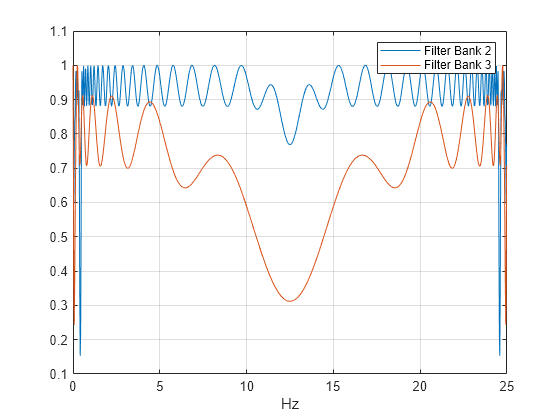littlewoodPaleySum
Littlewood-Paley sum for wavelet time scattering network
Syntax
Description
lpsum = littlewoodPaleySum(sf)sf,
the wavelet time scattering network. lpsum is an
M-by-L matrix, where M is the
number of elements in the Fourier transform of the scattering filters, and
L is the number of scattering filter banks. The columns of
lpsum are ordered by the position of the filter bank in the
scattering network. For example, the first column of lpsum corresponds
to the filter bank used for the first-order scattering coefficients.
Since the scattering transform is contractive, the Littlewood-Paley sums will not exceed one.
Examples
Input Arguments
Output Arguments
Extended Capabilities
Version History
Introduced in R2018b
